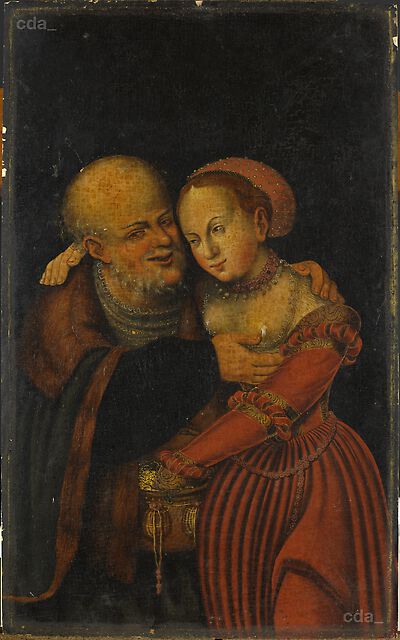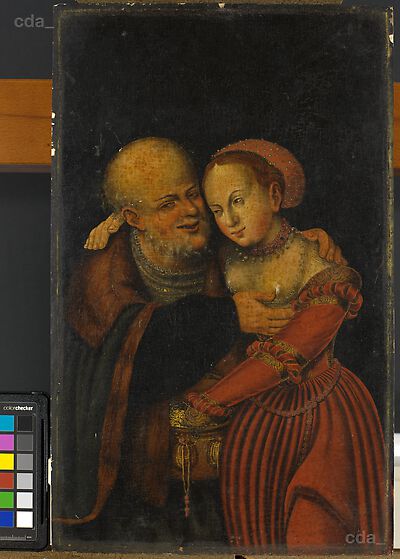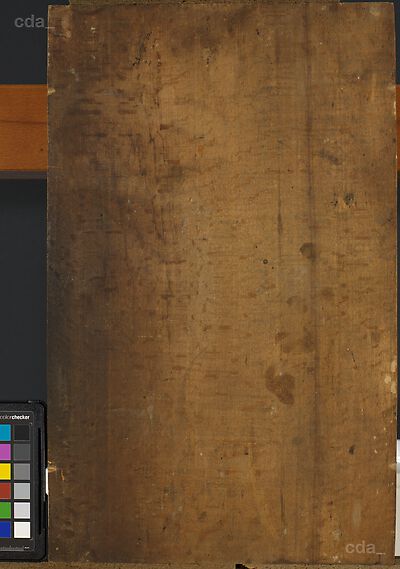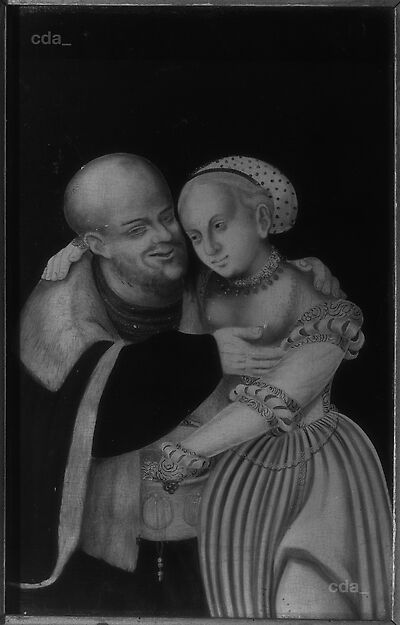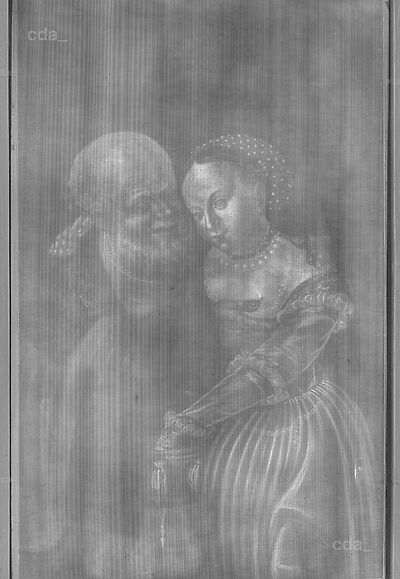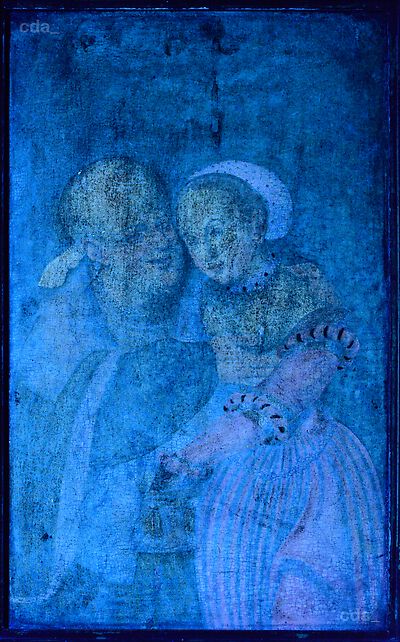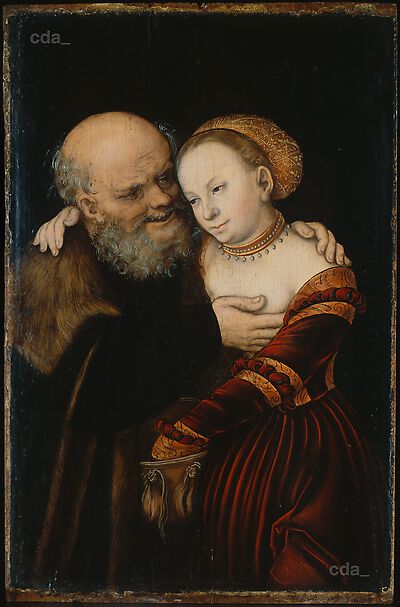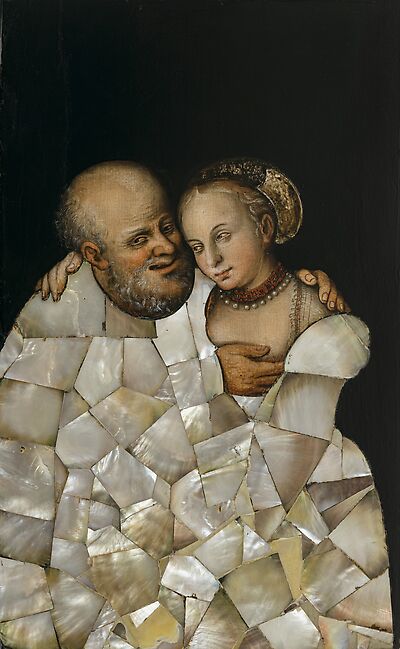Support
The wooden panel was made from a single beech wood plank. The revers has been carefully smoothed. The edges are not bevelled.
Beech wood was frequently used in the Cranach workshop from about 1520. The size of the panel diverges however from the standard formats employed in the cranah workshop from about 1520. The tool marks on the revers are also different from those usually found on verified paintings.
Ground and Imprimatura
The white ground extends to the edge of the panel. A barbe is not present; the edges of the panel appear to have been trimmed at some stage.
Underdrawing
The underdrawing was executed with a fine pointed drawing implement. Contours and essential details were described with a few accurate lines.No corrections were made to the design during the painting process.
The underdrawing on this painting is different from those usually found on verified Cranach works.
Paint Layers and Gilding
Using XRF analysis elements were detected in the paint and in combination with their optical charateristics the following pigments were identified:
red: Pb: lead white; Zn: zinc white (retouching?, trace); Cu: Cu-blue (azurite?, trace); Hg: vermilion; Fe: ochre/ iron oxide; Ca: chalk/ gypsum
gold: Au: shell gold; Pb: lead white; Zn: zink white (retouching?, trace); Cu: Cu-blue (azurite?); Hg: vermilion; Fe, Mn: ochre/ iron oxide; Ca: chalk/ gypsum
blue Pb: lead white; Cu: Cu-blue (azurite?, trace); Fe: ochre/ iron oxide/ prussian blue?; Ca: chalk/ gypsum
blue-grey: Pb: lead white; Cu: Cu-blue (azurite?, trace); Fe: ochre/ iron oxide/ prussian blue?; Ca: chalk/ gypsum
yellow-brown: Pb: lead white; Zn: zinc white (retouching?, trace); Cu: Cu-blue (azurite?, trace); Fe, Mn: ochre/ iron oxide; Ca: chalk/ gypsum
flesh paint: Pb: lead white; Zn: ziinc white (retouching? , trace); Cu: Cu-blue (azurite?, trace); Hg: vermilion; Fe: ochre/ iron oxide; Ca: chalk/ gypsum
The very small quantity of copper in relation to the larger quantity of iron found in the blue areas suggests the presence of prussian blue. There is no evidence of lead-tin-yellow. The red draperies were executed with red and black pigments without a black underpaint.
Patterns and highlights were painted on the draperies, coins, purse, bonnet and pearls in shell gold.
Another composition or correction to the present one were not visible in the x-radiograph.
The paint layer structure is different from other verified Cranach paintings. For example the red draperies were not underpainted with black. The identified pigments were used in the Cranach workshop and more generally in 16th century European panel painting north of the Alps and later. The lack of lead-tin-yellow in yellow areas and the use of shell gold e. g. in the slits of the red robe is atypical. It is certain that the author of this painting was not familiar with standard practice in Cranach's Wittenberg workshop.
[unpublished examination report, G. Heydenreich, 2018]
